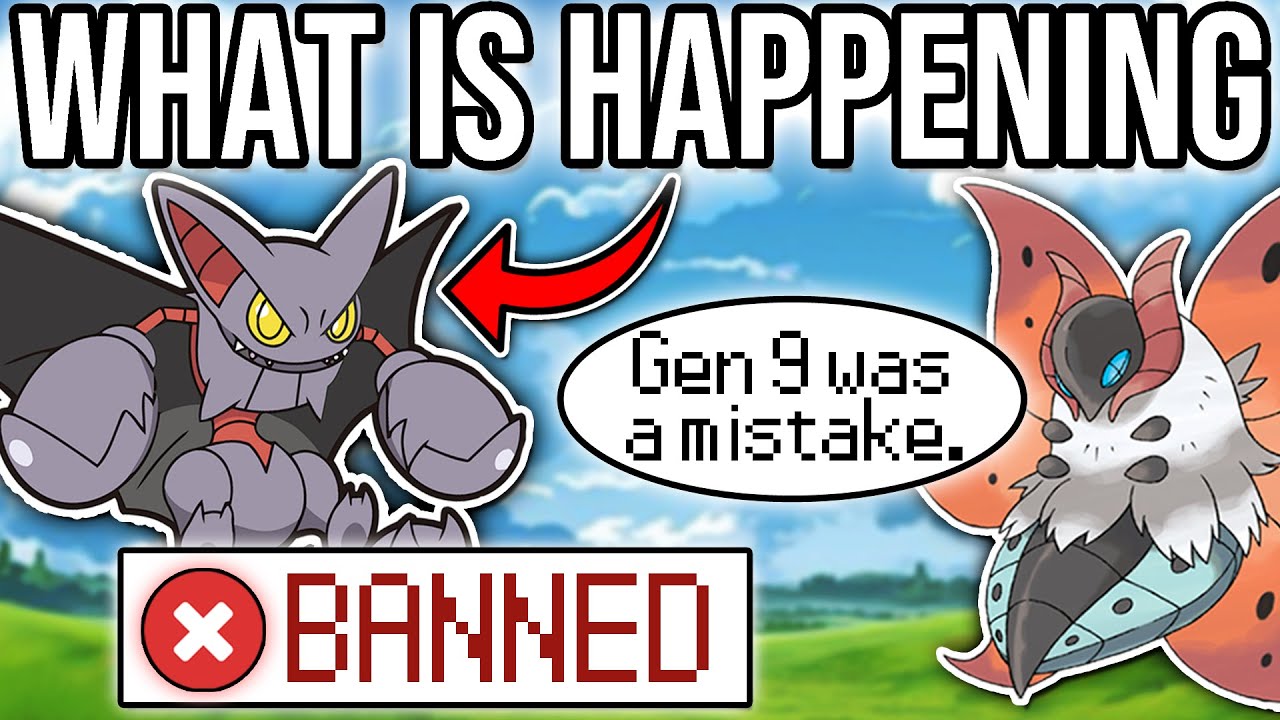They Actually Banned Gliscor. But Why?
Unleash Your Creative Genius with MuseMind: Your AI-Powered Content Creation Copilot. Try now! 🚀
The Bizarre Ban: A Democratic Decision
In the dynamic realm of Pokémon battles, where strategy meets unpredictability, a seismic shift has occurred. Picture this: gcore, a seemingly innocuous Pokémon that has graced the competitive scene for over a decade, has been thrust into the shadows. Banned from the realm of singles battles, it's a move that has left the community buzzing with disbelief. This wasn't a whimsical choice; it was a democratic decision fueled by a survey. Astonishingly, a whopping 66% of qualified players voted to exile gcore, making it a spectacle even wilder than banning powerhouses like Volcarona.
What's so perplexing about this ban? It's not the conventional offensive juggernauts causing chaos but a defensive stalwart, challenging the norms of the metagame. Defensive Pokémon rarely face bans, making gcore's exclusion a rare anomaly. The culprit? Poison Heal, an ability that catapults gcore into the realm of strategic prowess. While it's not a stranger to the limelight, residing comfortably in the U-tier, this sudden shift to the forbidden Uber tier is as unexpected as it gets.
But fear not, for there's a twist in the tale. The ban might not be eternal; a glimmer of hope emerges with hints that gcore could stage a triumphant return once the dust settles post-DLC (Downloadable Content). The evolving metagame may offer a different stage for gcore, a fair opportunity to retest its capabilities. A temporary ban, a reevaluation – the saga continues in the ever-unpredictable landscape of Pokémon battles.
Retesting Legends: The DLC Dilemma
As the banhammer echoes, it's not just gcore facing scrutiny. Legendary figures like zamazenta Crown and zamazenta hero are under the magnifying glass. In a peculiar twist of fate, zamazenta Crown finds itself labeled as potentially mid-tier in OU (OverUsed). This revelation sparks contemplation about retesting previously banned Pokémon, raising questions about the delicate balance within the metagame.
Finchinator, the OU tier leader, adds fuel to the speculation fire, hinting at the return of gcore after four years, only to be swiftly banned again. The anticipation builds as the community wonders if DLC releases will bring about a renaissance, allowing these legendary Pokémon to reenter the fray. The metagame, a canvas of constant evolution, may yet unveil surprises that challenge preconceived notions.
Gango and Sneezer: Menaces of the Metagame
The ban discussions don't end with gcore; two formidable contenders step into the spotlight – Gango and Sneezer. Gango, with its unique ability, Good as Gold, disrupts the metagame by rendering Hazard removal a daunting task. The rise of Hazard-centric strategies turns offensive teams into a dance of spikes and defog denial, all orchestrated by the elusive Gango. The community's discontent grows, questioning whether Gango, not gcore, should have been the primary focus of the banhammer.
Meanwhile, Sneezer, an unassuming evolution found in the wild, emerges as an unexpected powerhouse. Its unburdened prowess, coupled with a grassy seed setup, propels it to the forefront of hyper-offense strategies. As the grassy terrain becomes a battlefield for dominance, Sneezer's role in reshaping team compositions becomes undeniable. The debate intensifies – is Sneezer the next candidate for the banhammer?
The Ever-Changing Meta: A Double-Edged Sword
In the midst of bans and retests, a broader conversation emerges about the identity and stability of the current metagame. The Gen 9U landscape, with its dizzying array of bans, poses a challenge for players seeking stability and consistency. The impending DLC release looms like a specter, promising a metamorphosis that could either solidify or further destabilize the status quo.
The complexity lies in the subjective nature of metagame management. Smogon, the governing body of competitive Pokémon, orchestrates a delicate dance with community involvement. Surveys, suspect tests, and democratic decisions shape the destiny of Pokémon in the competitive arena. Yet, the ever-changing nature of the meta raises questions about the feasibility of maintaining a vision of the past in a landscape that craves constant evolution.
In the face of this chaos, one can't help but appreciate the proactive stance taken by Smogon. The community-driven approach, while tumultuous, ensures a level of engagement and responsiveness rarely seen in previous generations. The challenge, however, lies in striking a balance between evolution and stability, a task as elusive as a wild Pokémon.
Conclusion: Navigating the Uncharted Terrain
As the bans reverberate through the Pokémon universe, players find themselves at the intersection of excitement and uncertainty. The bans may be disorienting, the meta ever-shifting, but therein lies the essence of competitive play. The unpredictability, the debates, and the constant evolution are the threads that weave the rich tapestry of Pokémon battles.
So, fellow trainers, embrace the chaos, for within it lies the opportunity to adapt, strategize, and uncover the hidden gems of the metagame. As the DLC approaches, bringing with it the winds of change, the Pokémon community stands resilient, ready to explore the uncharted terrain that awaits. May your teams be versatile, your strategies unpredictable, and your Pokémon journeys filled with the thrill of the unexpected. The banhammer swings, but the adventure continues.

Related Recaps
- Céline Dion - The Power Of Love (Official Video)
- I found a new Steak Technique that makes my crust Unbeatable
- Jodha Akbar | Ep. 371 | Salim को नहीं है दिलचस्पी राज-काज के कामो में
- Aquí se cría PESCADO Y MUCHOS CAMARONES que son un regalo Del Mar
- Old Habits Die Hard // Pastor Vince Thomas, Jr. // Adult•ish Series (Part 3)